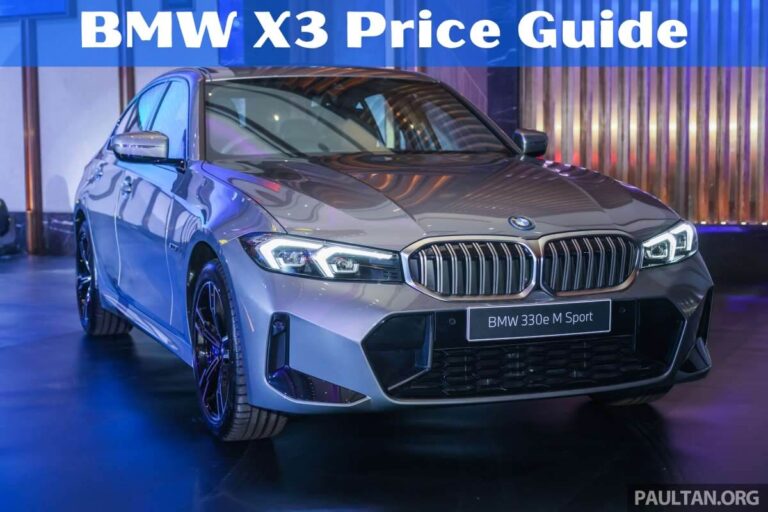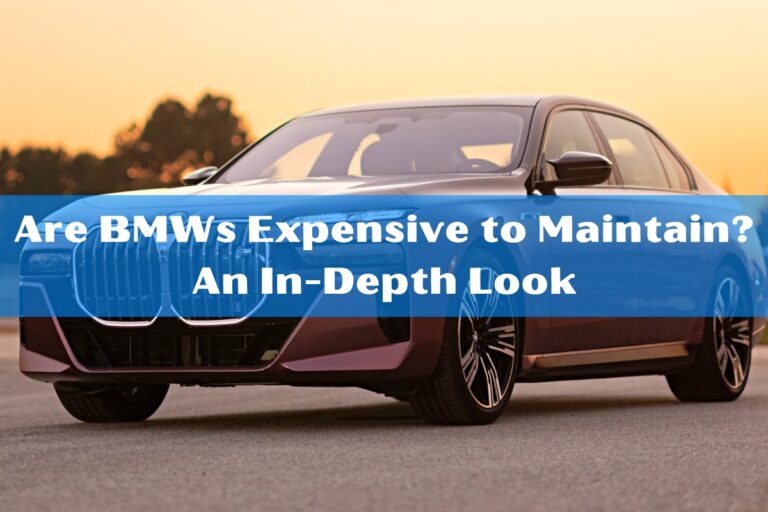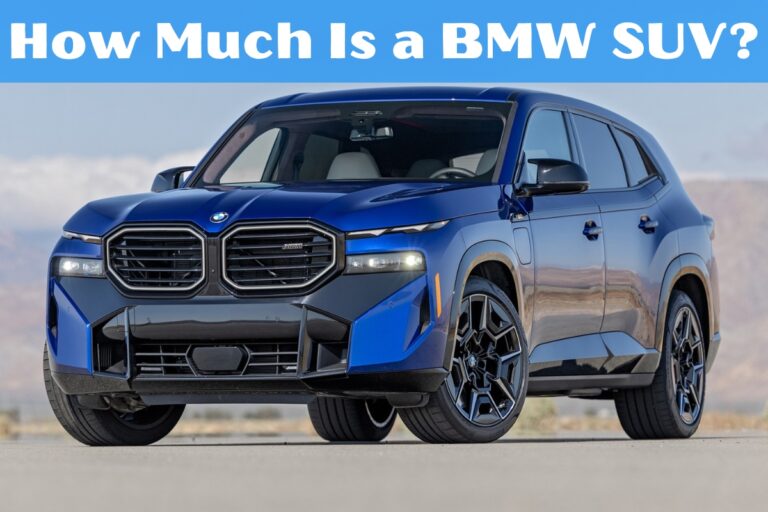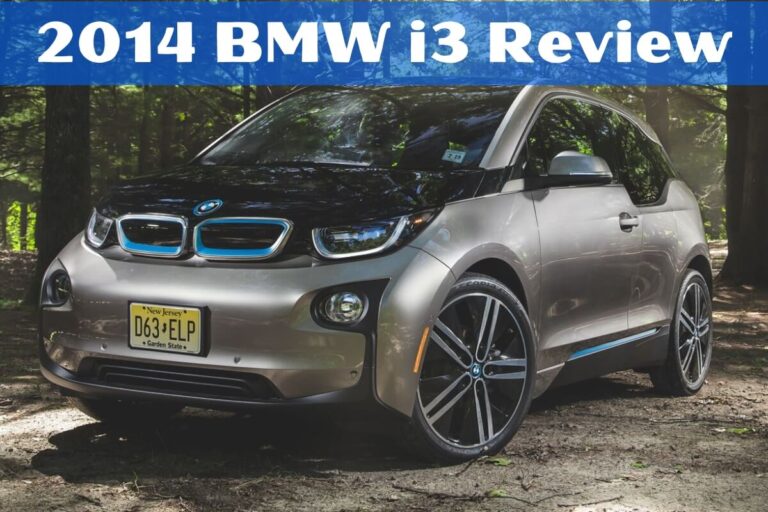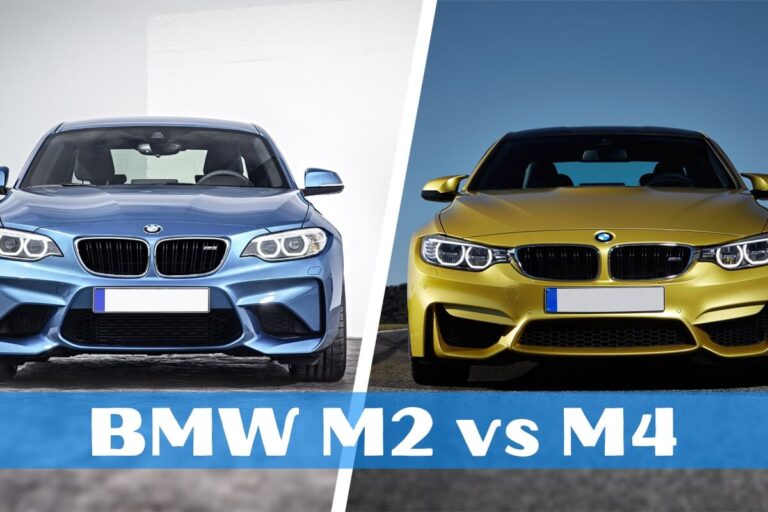BMW 330e: The Electrifying Blend of Power and Efficiency

Are you considering buying a luxury plug-in hybrid sedan but aren’t sure if the BMW 330e is the right choice? This comprehensive review has all the details you need to make an informed decision.
The BMW 330e combines premium luxury, sporty driving dynamics, and plug-in hybrid efficiency into one compelling package. While not perfect, it makes a strong case as one of the top plug-in hybrid sedans on the market.
In this in-depth review, we’ll cover everything you need to know about the BMW 330e, including its performance and driving experience, electric range and efficiency, interior quality and technology, pricing and trim levels, and how it stacks up against key rivals like the Mercedes C300e and Tesla Model 3. Let’s dive in.
What’s New for the 2024 BMW 330e?
The 2024 BMW 330e receives a handful of updates and changes as part of the 3 Series’ latest facelift. On the outside, there are new front and rear bumper designs, slimmer headlights and taillights, and revised kidney grille styling that gives the 330e a sharper, more modern look.
Inside, the updated 330e borrows the iDrive 8 infotainment system from BMW’s newest models. This includes a slick curved display housing a 12.3-inch digital instrument cluster and 14.9-inch central touchscreen. The graphics are crisp, the menus are intuitive, and handwriting recognition makes inputting addresses a breeze.
For 2024, the 330e also gains additional standard safety technology like lane departure warning, front collision warning with pedestrian detection, and rear automatic emergency braking. Adaptive cruise control and a hands-free driving assistant are available as options.
BMW 330e Performance and Driving Experience
Under the hood, the BMW 330e combines a 2.0-liter turbocharged four-cylinder gasoline engine (181 hp and 258 lb-ft of torque) with an electric motor that generates 107 hp and 195 lb-ft of torque. Total system output is 288 hp and 310 lb-ft of torque when using the “XtraBoost” overboost function.
For a plug-in hybrid, the 330e is seriously quick. BMW estimates it will accelerate from 0-60 mph in just 5.8 seconds when using the launch control function. That’s sports car territory and puts it on par with the standard, non-hybrid 330i model in terms of straight-line performance.
The eight-speed automatic transmission swaps gears smoothly and seems to always be in the right gear for the situation. Left in its default “Hybrid” mode, the powertrain juggles the gas engine and electric motor seamlessly with minimal driveline shudder or roughness.
For maximum acceleration, you can put the 330e into “Sport” mode. This keeps the gas engine running continuously and uses electric power to provide an extra surge of torque under acceleration via the XtraBoost function. It gives the 330e an extra kick in the pants when merging onto highways or passing slower traffic.
On twisty back roads, the 330e driving experience is quintessential BMW. The steering is precise and well-weighted, though perhaps lacking the ultimate feedback of BMW’s non-hybrid models. Body motions are tightly controlled, with minimal body roll through fast transitions.
However, the added weight of the hybrid battery pack does dull the handling somewhat compared to the standard gas 330i. The 330e is a bit less willing to change directions and feels a tad more nose-heavy under very hard braking. The ride quality suffers as well, with the 330e’s standard M Sport suspension transmitting more harsh impacts into the cabin over rougher pavement.
What is the Electric Range of the BMW 330e?
One of the biggest reasons to opt for a plug-in hybrid like the BMW 330e is for the ability to run on pure electric power for short journeys, thereby using less fuel and producing zero direct emissions. According to BMW and EPA estimates, the 330e can travel up to 41 miles on just its 12 kWh battery pack before the gasoline engine needs to kick back in.
In the real world, most owners can likely expect 25-35 miles of pure electric driving range under normal conditions. Factors like cold weather, aggressive driving, heavy accessory usage, and a full load of passengers will reduce that range further.
To maximize electric range, the 330e has special “Electric” and “Battery Control” modes built into its iDrive system. Electric mode locks out the gas engine entirely provided there is sufficient battery charge remaining. Battery Control allows you to hold a certain state of charge in the battery pack for electric driving later on your route.
When running in hybrid mode with both motors working together, BMW claims the 330e can achieve up to 148 mpg combined fuel economy based on EPA estimates. Of course, that eye-popping figure assumes lots of electric driving and light usage of the gas engine. In my experience testing plug-in hybrids, you can expect to see real-world efficiency in the 40-50 mpg range on longer highway journeys.
How Well Does the 330e Handle?
The BMW 330e does an admirable job balancing handling prowess with the realities of hauling around a large, heavy battery pack. It’s definitely not as tossable or engaging as a standard gasoline 3 Series, but it remains a capable back road burner.
With the weight of the hybrid battery mounted low and centered in the chassis, the 330e exhibits typical BMW handling traits. The steering is nicely weighted and precise off-center. Body motions are well-controlled, with moderate lean in corners and little excess up/down or side-to-side heads toss over undulations.
However, there is a noticeable amount of inertia you have to overcome when changing directions aggressively. The 330e doesn’t respond quite as eagerly or crisply to steering inputs as a standard 3 Series without the added battery weight. The front end also loads up more under very hard braking, requiring smoother applications of the pedal to trail it into corners.
Ride quality is satisfactory in the 330e’s default Comfort setting, with the suspension effectively filtering out smaller bumps and ripples. But larger impacts tend to crash through harshly, likely due to the stiffer spring and damper rates required to manage the 330e’s extra mass.
When optioned with the M Sport suspension upgrades, the 330e displays noticeably more head toss and impact harshness over rougher surfaces. While the upgraded suspension better masks the extra weight under hard cornering, I’d skip it unless you plan to spend lots of time driving aggressively on smoother roads.
BMW 330e Interior, Cargo Space and Technology
Like other current 3 Series models, the 330e boasts an impeccably constructed interior with premium materials and solid build quality. The cabin design itself isn’t particularly exciting, but it’s ergonomically sound and executed with close attention to detail.
The front seats are remarkably comfortable and supportive for extended stints behind the wheel. Rear seat accommodations are adequate for two adults, though three abreast would be a tight squeeze on longer trips.
One downside to the 330e’s design is a reduction in cargo capacity compared to gas-only 3 Series. The trunk measures 13 cubic feet, down from 17 cubes in standard sedans, due to space taken up by the lithium-ion battery pack. Folding rear seats with a 40/20/40 split remain standard for carrying longer items.
As mentioned earlier, all 2024 BMW 330e models receive the automaker’s latest iDrive 8 infotainment system. It features a gorgeous curved glass display housing two screens: a 12.3-inch fully digital gauge cluster and a 14.9-inch central touchscreen for infotainment, navigation, and climate controls.
The system is quick, intuitive to use, and features cutting-edge tech like natural speech recognition and cloud-based navigation. A wireless charging pad, Harman/Kardon audio system, and in-car WiFi are among the many available options.
Safety tech comes standard on the latest 330e as well. All models include automatic emergency braking, pedestrian detection, lane departure warning, and rear parking sensors. Optional upgrades include a surround-view camera system, adaptive cruise control, and a hands-free driving assistant dubbed “Active Driving Assistant Professional.”
BMW 330e Pricing and Trim Levels
The 2024 BMW 330e kicks off at $43,995 (all prices include a $995 destination fee) for the rear-wheel drive eDrive sedan model. Adding xDrive all-wheel drive bumps the base price to $46,295. That represents a premium of about $4,500 over a comparable 330i gasoline sedan.
Standard equipment on the base eDrive trim includes 18-inch alloy wheels, LED headlights, dual-zone automatic climate control, power front seats, a panoramic moonroof, and the iDrive 8 infotainment system with navigation. Also included are parking sensors, automatic emergency braking, and lane departure warning.
From there, the 330e is available in sportier 330e xDrive and M Sport trims. The xDrive starts at $46,295 and adds an M Sport differential and all-wheel drive hardware. The M Sport trim ($50,345 RWD, $52,645 AWD) brings an aerodynamic body kit, Sport seats, a sporty steering wheel, and a firmer M Sport suspension setup.
Desirable options to consider include the Dynamic Handling package (adaptive dampers, upgraded brakes), parking assistance aids like a surround-view camera system, heated front seats, a premium Harman Kardon audio system, in-car WiFi, and more.
Load a 330e xDrive M Sport up with popular options, and you’re likely looking at an as-tested price around $60,000. That’s a hefty sum for a compact luxury plug-in hybrid, positioning the 330e towards the higher end of the segment.
Is the BMW 330e a Good Value?
Whether the BMW 330e represents a good value depends heavily on how you intend to use it. As an efficient, all-electric commuter, it makes a very strong case when you factor in potential gas savings and incentives like the $7,500 federal EV tax credit (assuming it’s renewed for 2024).
With up to 41 miles of electric range available, the 330e can easily cover the daily driving needs of many buyers using no gas at all. This offsets its higher purchase price compared to a regular 330i. Even on longer road trips, the 330e’s hybrid operation allows it to achieve 40-50 mpg when the battery is depleted.
On the flip side, if you rarely plan to plug the 330e in and charge the battery, it becomes harder to justify the higher initial price tag. You’re paying a premium for hybrid technology you won’t be taking full advantage of.
The 330e also doesn’t make as much sense if you need to maximize cargo space in a compact luxury sedan. Its trunk space is compromised by the battery pack location. Practicality is further hampered versus hatchback EVs or plug-in hybrid SUVs.
From a pure driving enjoyment standpoint, the 330e isn’t quite as sharp or engaging as BMW’s traditional gas-powered sport sedans. The extra weight blunts handling response and adds some compromise to the ride quality. Performance enthusiasts are likely better served by the standard 330i or upcoming hybrid “M” models.
Overall, the 330e hits a sweet spot for buyers who want a premium compact luxury car that is highly efficient for daily commuting but doesn’t sacrifice the driving dynamics BMW is known for entirely. If you can take advantage of EV incentives and plan to utilize the electric range, it makes a very strong case versus gas or EV alternatives.
Comparing the BMW 330e to Its Rivals
The compact luxury plug-in hybrid sedan segment remains relatively small, but the 330e faces some stiff competition from models like the Mercedes-Benz C300e PHEV and Volvo S60 Recharge PHEV.
BMW 330e vs Mercedes C300e
The C300e matches the 330e’s 25-mile EPA electric range estimate (62 miles in Europe) but packs a more powerful 2.0L turbo four with a 25.4 kWh battery pack. With 312 total system horsepower, the Mercedes is quicker from 0-60 mph at an estimated 5.4 seconds.
The C300e also boasts a larger 13.5 cubic foot trunk, as well as an available AMG Line trim with an air suspension that lets you raise the ride height for rougher roads. On the downside, it carries a higher base price than the BMW before options.
BMW 330e vs Volvo S60 Recharge
Volvo’s compact luxury plug-in hybrid is very similar to the 330e on paper, with a 2.0L turbo engine, electric motor, and an estimated 22-mile EV range. Power outputs are slightly lower than BMW at 260 hp, though acceleration is still brisk.
The big advantage for the S60 Recharge is more cargo versatility thanks to its trunk opening and folding rear seats, though overall trunk volume is also tight. Technology like Google’s Android Auto interface help the Volvo stand out, but it starts higher than the 330e at around $49,000.
BMW 330e vs Tesla Model 3
For a few thousand dollars more than a loaded 330e, you could opt for a Tesla Model 3 sedan which provides over 250 miles of pure electric range and blistering straight-line performance. Of course, you sacrifice the 330e’s gas engine for long highway trips.
The Tesla is less involving and agile to drive than the BMW, but makes up for it with brutally quick acceleration, cutting-edge technology and connectivity features, and access to Tesla’s extensive Supercharger network. Lower operating costs also favor the EV in the long run.
Should You Buy the BMW 330e or One of Its Rivals?
The BMW 330e makes the most sense for buyers who want a premium, compact luxury sedan that can handle gas-free, emissions-free commutes during the week while still being capable on the open road with its hybrid powertrain.
With an EPA-estimated 25-35 miles of real-world electric range, the 330e gives you enough capacity for most daily driving duties on battery power alone. Once that range is depleted, the turbocharged gas engine kicks in seamlessly to keep you moving. Fuel economy in hybrid mode is enough to make it a viable road trip vehicle.
If your daily driving demands exceed 40 miles per day on a consistent basis, then something with more EV range like the Model 3 or prospective EVs like the BMW i4 sedan would likely serve you better. The added cost up front is mitigated by lower operating costs and no need to visit gas stations.
Traditionalists who want the most engaging driving experience will find the regular BMW 330i sedan a better fit. Its lighter, simpler chassis offers more precise steering feel and nimbler handling responses compared to the heavier, battery-laden 330e. Trunk space is also roomier without the hybrid battery taking up room.
Looking beyond just BMW, the Mercedes C300e and Volvo S60 Recharge offer similar plug-in hybrid capabilities with their own strengths and quirks. The C300e boasts more power and the ride quality benefits of an air suspension, while the Volvo counters with better cargo versatility and slick Google-based infotainment tech.
Ultimately, the BMW 330e represents a well-executed balance between eco-friendly efficiency and premium driving dynamics. It has enough electric range for most commuters while still delivering the performance and handling BMW buyers have come to expect. Factor in aggressive lease deals and incentives, and the 330e makes a compelling case versus gas-only and full EV alternatives.
Design and Interior:
The BMW 330e maintains the sleek and sporty styling that has become synonymous with the 3 Series lineup. Its athletic stance and elegant lines seamlessly blend with the iconic kidney grille and striking LED headlights. Inside, the cabin exudes a premium ambiance with high-quality materials and meticulous attention to detail. The well-bolstered seats provide ample support, while the intuitive layout of controls and the latest iDrive infotainment system contribute to a user-friendly experience.
Performance and Handling:
Under the hood, the BMW 330e combines a 2.0-liter turbocharged four-cylinder engine with an electric motor, delivering a combined output of 288 horsepower and 310 lb-ft of torque. This potent powertrain propels the 330e from 0 to 60 mph in just 5.6 seconds, ensuring an exhilarating driving experience. The seamless integration of the electric motor and gasoline engine allows for smooth and responsive acceleration, while the well-tuned suspension and precise steering contribute to the car’s agile handling and exceptional road manners.
Efficiency and Range:
The BMW 330e excels in fuel efficiency, thanks to its advanced plug-in hybrid system. With a fully charged battery, it can travel up to 22 miles on electric power alone, making it ideal for commuters and city dwellers. When the battery is depleted, the gasoline engine kicks in, providing a combined EPA-estimated fuel economy of 28 mpg in mixed driving conditions. This impressive efficiency not only reduces fuel costs but also contributes to a lower environmental impact.
Charging and Technology:
Charging the BMW 330e is a convenient process, with multiple options available. Owners can choose to charge the battery using a standard household outlet or opt for a Level 2 charging station for faster charging times. Additionally, the 330e comes equipped with a wealth of advanced technologies, including BMW’s cutting-edge driver assistance systems, enhancing safety and convenience on the road.
Let’s Complete:
The BMW 330e represents a remarkable fusion of performance, efficiency, and luxury. With its potent yet eco-friendly powertrain, engaging driving dynamics, and upscale interior, it caters to enthusiasts who appreciate the thrill of spirited driving while embracing a more sustainable future. Whether navigating city streets or embarking on long journeys, the 330e delivers an exceptional driving experience, making it a compelling choice for those seeking the best of both worlds.

